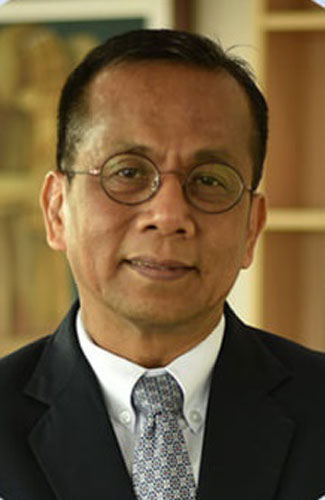Incoming Socioeconomic Chief Arsenio Balisacan has identified the agriculture and manufacturing sectors as among the priority industries of the Marcos administration.
In an interview with DZMM Teleradyo, Balisacan said the incoming economic team has met with president-elect Ferdinand Marcos Jr. to, among others, identify high priority programs and projects that can be launched quickly as well as prepare for longer-term priorities.
“We all agreed that our priorities should be agriculture, manufacturing, and the intention there is to raise productivity,” Balisacan said.
He said in the case of agriculture, for example, not enough attention was given to providing farmers with access to modern seeds and varieties, new processes and modern technologies in order to increase productivity.
“We really have to invest in them, prioritize them in the budget,” Balisacan said.
Balisacan said the upcoming administration also intends to focus on completing ongoing or nearly completed infrastructure projects.
Likewise, the next government will give more attention to digitalization, including access to internet, and will ramp up the national ID system, he added.
Meanwhile, the Department of Finance (DOF) said in a statement yesterday there are higher odds of achieving the government’s investment-led growth targets over the medium-term, given the infrastructure spending in prior years, the lowering of corporate income taxes and the recently passed structural reforms.
“From economic management in general, trimming down the debt-gross domestic product (GDP) ratio means growing the economy at a faster rate than the build-up of debt. This year, the Development Budget Coordination Committee pencils real GDP growth to be between seven percent and eight percent, and six percent and seven percent next year through 2025,” the DOF said.
“Note, however, that these growth assumptions rest on the absence of negative economic shocks (such as the resurgence in infections),” it added.
On the fiscal front, the DOF said fiscal consolidation is achieved by narrowing the deficit — shoring up revenues and cutting non-priority expenditures but without sacrificing infrastructure spending.
“Absent new tax measures and further cuts in spending, the latest baseline scenario projects the deficit reaching 4.1 percent of GDP by 2025, down from 2021’s 8.6 percent.
Mobilizing an additional P250 billion a year will cut further the deficit so as to reach around 3.2 percent by 2025, a figure comparable to the pre-pandemic deficit of 3.4 percent,” the DOF said.
“It is therefore important to restore fiscal health and build up reserves when the economic weather is fine so as to have the capacity to respond again should shocks materialize. This is akin to having an insurance that covers for contingencies. Not having one is a fool’s game and fiscal heartaches hit the hardest when it’s too late,” it added.




